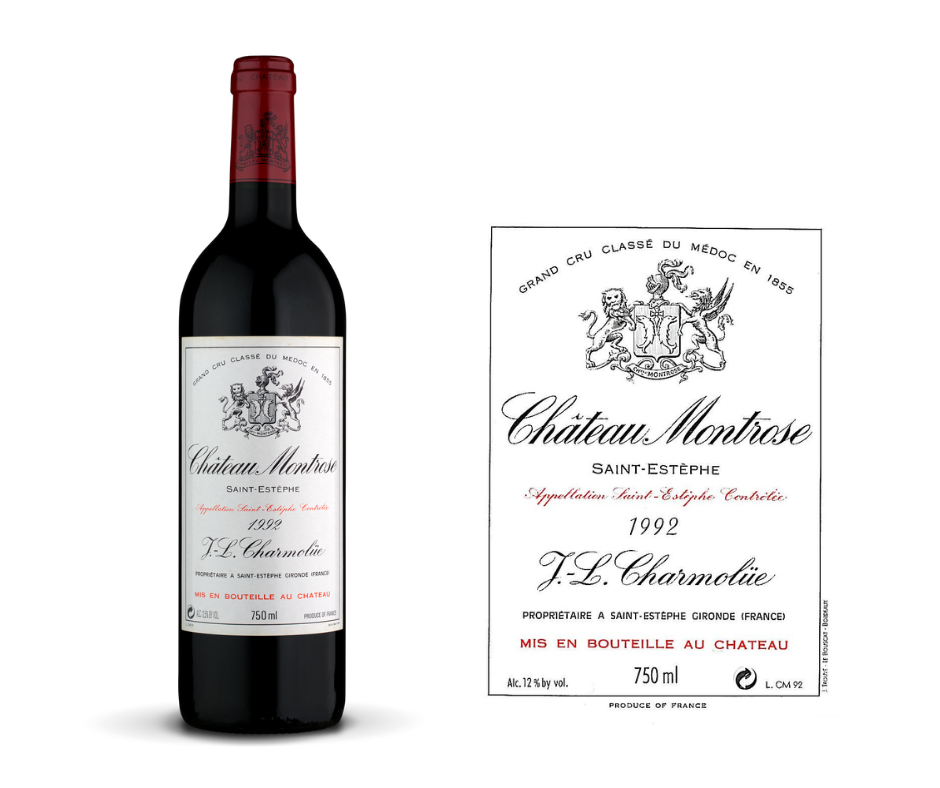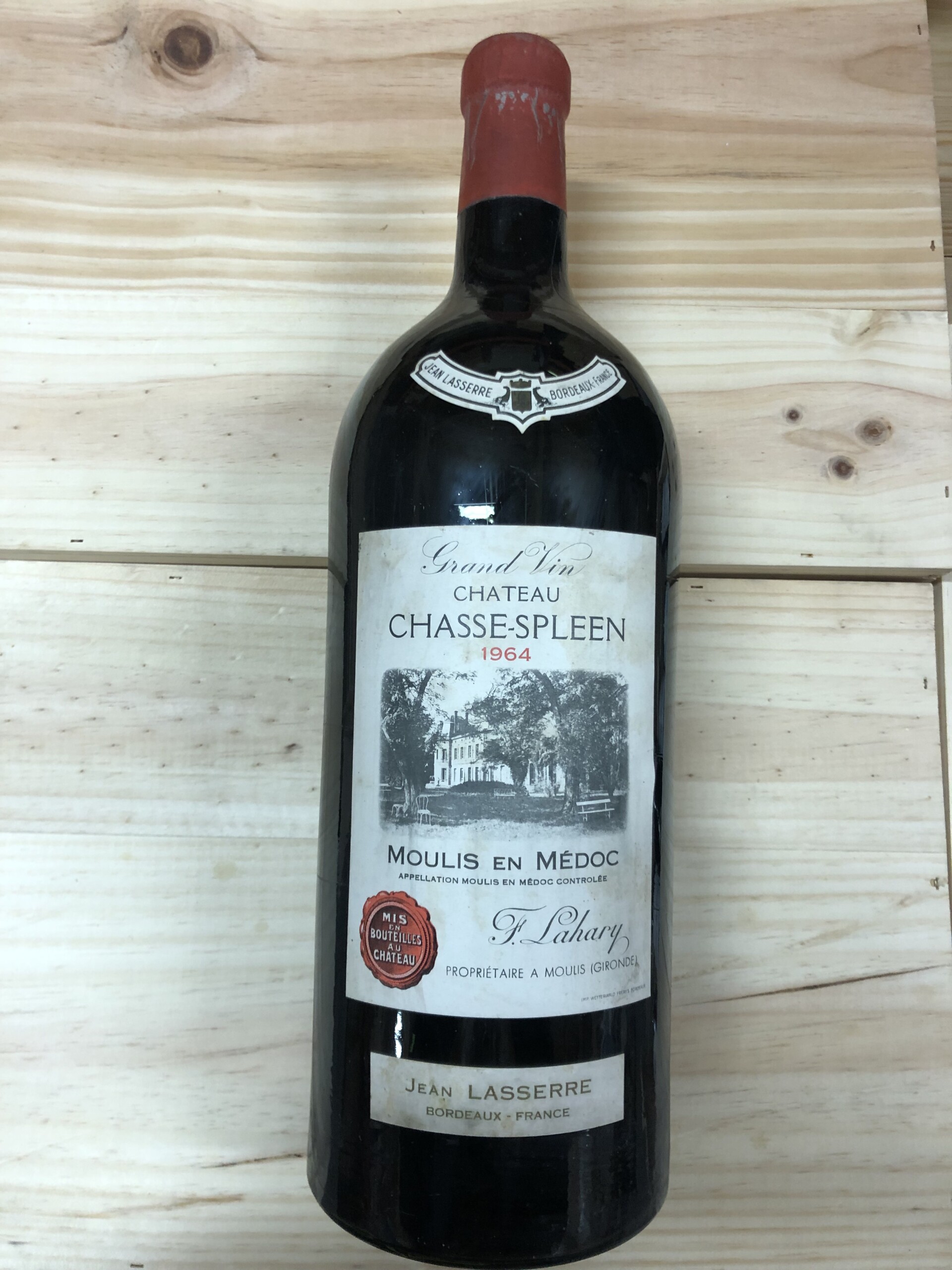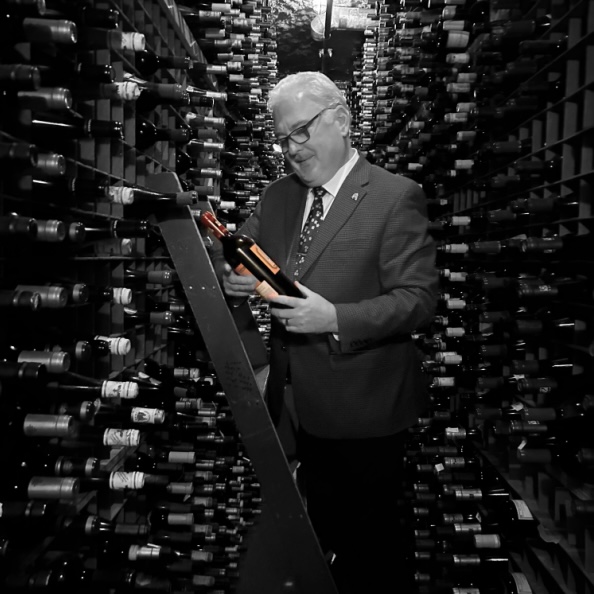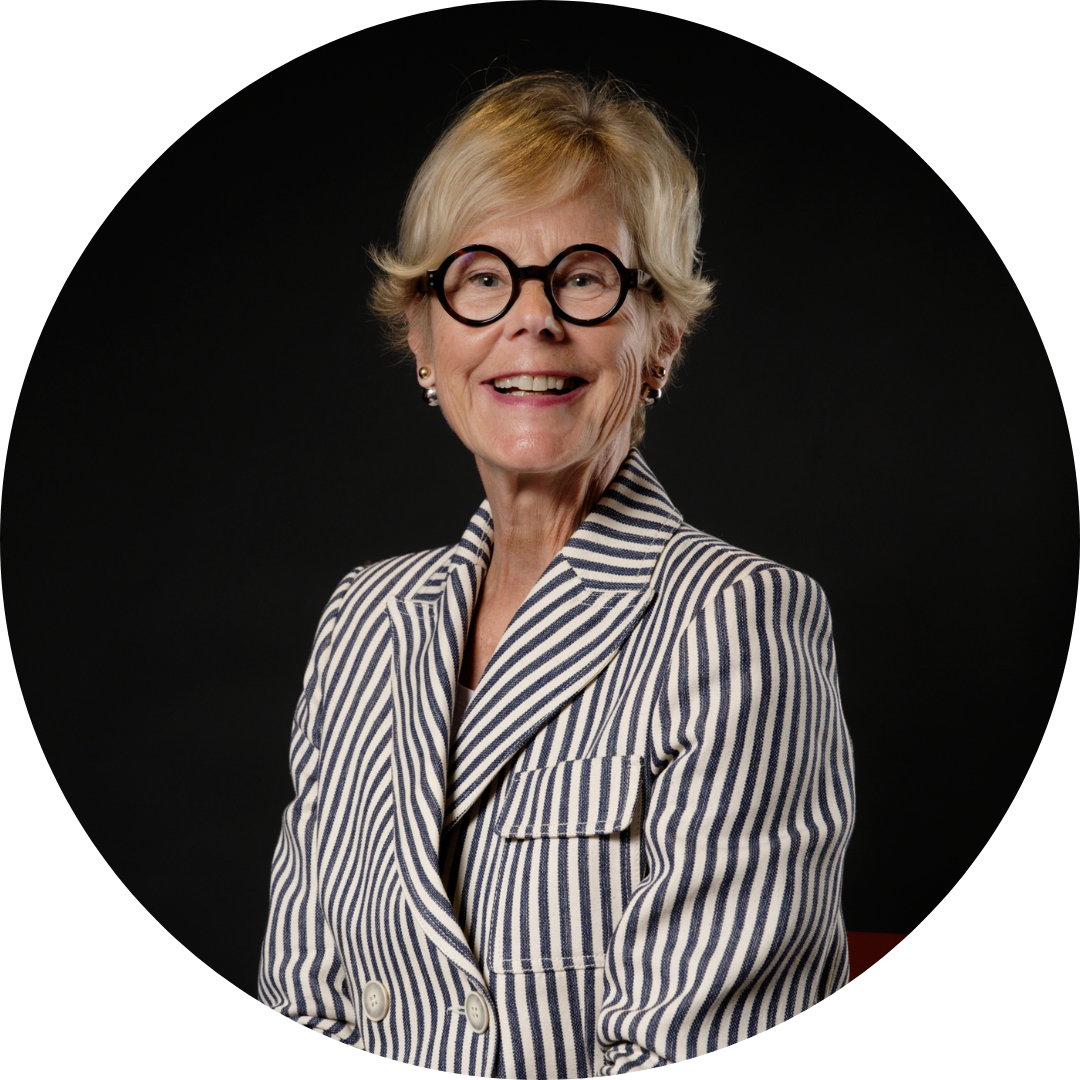Brad Dixon
Head Sommelier Bern’s Steakhouse Florida
Arnaud de Laforcade (Financial and Commercial Director Château Cheval Blanc) told me that he once hosted the team of Bern’s Steakhouse at Cheval Blanc. They presented him with their wine list – a remarkable 200-page tome. So, time for me to pose some questions to the senior sommelier of Bern’s, Brad Dixon, to learn more about him and this remarkable steakhouse, renowned for offering one of the most extensive wine selections in the United States. Brad Dixon became part of the Bern’s team in 2003 as a sommelier. Working alongside three other sommeliers, they manage an amazing wine collection boasting 6,500 different selections and over 700,000 bottles in their inventory.
Gerda: How did your passion for wine developed ?
Brad Dixon: As a young man, I always worked in restaurants and bars. When I was twenty, I even worked for two French men, one from Paris and the other from Toulouse. I worked for them for 7 years during which we opened 4 restaurants in Florida. We didn’t have the budget to have a very deep cellar with Classified Growths, but I learned a lot about French wine thanks to them. We focused mainly on Rhône wines and wines from the Midi and Provence. Occasionally we were buying a little bit of Bordeaux and Burgundy. This is how my passion for wine started.
G: What are the most rewarding and demanding aspects of work ?
BD: When people come to our restaurant, they have very high expectations, and if we can exceed those expectations, which we are fortunate enough to do thanks to our unique wine list, it is incredibly rewarding. When they leave and they say “We knew it would be good but not that good”, that is the most rewarding feeling. Additionally, being able to share wonderful Bordeaux wines with our guests who are older than they are, is truly special. It’s experiences like these that explain why I have been a sommelier for over 20 years. As for the most demanding aspect, it would be the long working hours we have to put in. However, the rewards of our work make it all worth it.
G: How do you stay in a good shape ?
BD: According to my doctor, I should eat a little healthier and exercise more, but I try to get some good rest. However, with the demanding job of working six long days, it can be challenging.
Relationship with wineries
G: What are the most important factors for selecting wines for your wine list?
BD: At Bern’s we are fortunate to have a budget that enables us to buy the finest wines in the world. Our strength is certainly France, even after all these years (Bern’s was created in 1956). California wines are also gaining popularity, particularly big cabernets from this region and Bordeaux, which are our bestsellers.
G: How do you interact with wineries to select wines for your wine list?
BD: There are many ways to keep this relationship. We try to travel as much as we can, much like our owner David Laxer. In Florida, due to state regulations, we are required to purchase wines from state distributors with whom we have developed close relationships. Whenever importers or wine makers come over we try to make as much appointments we can. We are lucky because we are a well-known destination, receiving more requests than we can accommodate in a week. Last night we had a vigneron from Burgundy who had dinner with a producer from Oregon. I try to come to Bordeaux once a year. If I can’t come in summer I try at least to do the tasting organized by the Unions des Grands Crus in the United States either in Miami or in New York. It is crucial to taste the new vintage and I appreciate this concept greatly. There is always a wine maker or director with whom you can discuss the wines.
Customers requirements
G: What are the most common expectations your customers have regarding wines and your expertise as a sommelier?
B: Guests typically expect to discover wines that they can’t find in other places. This is easier for those who are new to wine. You can surprise him with an older wine or a wine from a riper vintage. However, we also cater a lot of serious collectors. When they peruse our list, they might mention “Oh I have a case of all 1982 First Growths in my cellar”. I am not interested in those I want something else. That’s the moment I have to work harder to find an older vintage that they never had. Interesting is that our list features vintages that our founders weren’t afraid to invest in, even when others considered them to be off or of medium quality. We possess large formats of Montrose 1992, a vintage known for its high acidity. Vintages like 1952 or 1957 are interesting to me as well due to the development of beautiful aromas of dried cranberries with tannins having softened over time. All these vintages were in the beginning dominated by high acid and tannins but now some of them are beautiful. We are very lucky to be able to offer those wines as we began collecting Bordeaux from impeccable provenance in 1960. Our 700 000 bottles are stored in a temperature-controlled warehouse at 12°C. It is amazing that our founder Bern Laxer, who passed away 20 years ago, had the foresight to start this collection.

Bordeaux wines
G: What is your opinion about Bordeaux wines?
BD: We have an expression in the USA that goes “it is my bread and butter”. I sell more Bordeaux than any other wines. When people visit our restaurant, they often say “I usually drink Cab from California, but when I come to Bern’s Steakhouse, I have to drink French; it is the right thing to do here”. It is good in one way but it is also tricky for a sommelier. When they mention they drink mainly California Cabernet, it implies to me that I should find a very warm vintage, like 2003 which I love a lot. I can’t sell a 1993 Bordeaux, that will be too much out of their way, lacking fruits and too many tannins. But why not to propose a 1996 or 1999? Both vintages still have some good fruit. Bordeaux is a great place for me and even though I don’t taste a lot of very young Bordeaux, I feel that we can drink Bordeaux a little bit younger. Part of this is due to viticultural changes but climate changes certainly plays a role. Nowadays, there are some vintages which will be more approachable at younger age.
G: What strategies do you use to highlight lesser-known or underrated Bordeaux wines?
BD: I have a team of 3 other sommeliers and I often tell them: “You need to know your vintages”. We try wines whenever possible because wines like, d’Aiguilhe 2017 or Trois Croix 2016, which we have on our list, can’t simply be highlighted in the book. They need to be brought to the attention of the guests by the sommelier, and that is the sommelier’s job.
Tendancies
G: Are there current trends in USA, and if so, what are the most popular trends right now?
BD: I am in a bubble sometimes because people are coming to us for old and exceptional wines. But, yes I do see a trend in our restaurant. Consumers are seeking wines with higher acidity, which are perceived as more food-friendly, regardless of whether they are Bordeaux, Burgundy, or from California producers. There’s a shift towards better-balanced wines and not overly ripe or big. In former days the demand for those wines was higher. The new trend is certainly good for Bordeaux.
G: What do you think about scores? Robert Parker is a great fan of your restaurant?
BD: His influence is undeniable and he did a great job. For the young customers in their 30s and 40s, who visit our restaurant, Jeb Dunnick is more important. In the old days customers came in with long printed files containing Robert Parker scores. It’s something we don’t see anymore, not only because of the internet but also because there is no journalist anymore with his importance.
G: How do you stay up-to-date with ever-changing trends in the wine industry, and how does it influence your wine choices?
BD: I am still of the old school, I read Decanter and Wine Spectator because a lot of my customers refer to these magazines. Additionally, I engage in frequent conversations with people in the wine business, which helps me stay up-to-date.
Advice for future sommeliers
G: What advice would you give to young professionals aspiring to become high-level sommelier?
BD: Studying is very important, but I also believe the most important thing is providing an enjoyable experience. It is essential to put people at ease; a customer must not feel intimidated when a sommelier comes to their table. Especially a wine list at Bern’s can be intimidating for those not well-versed in wine, and it shouldn’t cause them stress. A truly good sommelier can recognize when the customer is nervous. When approaching a table, you can quickly discern if the guests are knowledgeable collectors, with whom you can engage in serious discussion, or if they require a gentler approach, ensuring they feel comfortable asking questions to the sommelier.
We sometimes receive remarks that Bordeaux has become too expensive, but we are fortunate to procure enough to obtain the best pricing in the market, which we reflect on our wine list. However, this issue is not exclusive to Bordeaux; exceptional wines across the board have seen price increases. Consider the prices of California Cabs, for example. People are aware of these trends.
The wines
G: What is the best way to taste?
BD: Even after all these years, I enjoy a lot those tastings at the tableside, especially when you pull out something very rare. I don’t give my opinion about the wine. I might suggest: “I taste some tobacco, this is smoky, cedar, give it more time to get more fruit out of the wine”. I prefer not to be alone at the office with a glass of wine; I enjoy discussing it with others. It’s a wonderful product to share.
G: What is your favourite grape variety ?
BD: I am very fortunate that over all these years I have tried amazing Burgundies and Bordeaux. Recently I opened a double magnum of Château Latour 1947, and it met my very high expectations. However when you come across a wine that overachieve, like Chasse Spleen 1964 – I opened it recently – it is even more wonderful. I couldn’t believe how what a great wine it was. 1964 is a tricky vintage. If they harvested in time, the wines are very good. Some people didn’t. Chasse Spleen overachieved, better than I thought it would be. I have some great vintages of Chasse Spleen like 1959 and 1961 and there are some great 1964, like Latour but with this Chasse Spleen 1964. I was particularly happy.

G: What is the best food pairing with a Bordeaux wine?
BD: I better have to say steaks, but also lamb cooked for a long time with a Bordeaux is often amazing as well. I am a bit of a classicist, and the classic food pairings endure forever.
Gerda BEZIADE has an incredible passion for wine, and possesses a perfect knowledge of Bordeaux acquired within prestigious wine merchants for 25 years. Gerda joins Roland Coiffe & Associés in order to bring you, through “Inside La PLACE” more information about the estate we sell.


